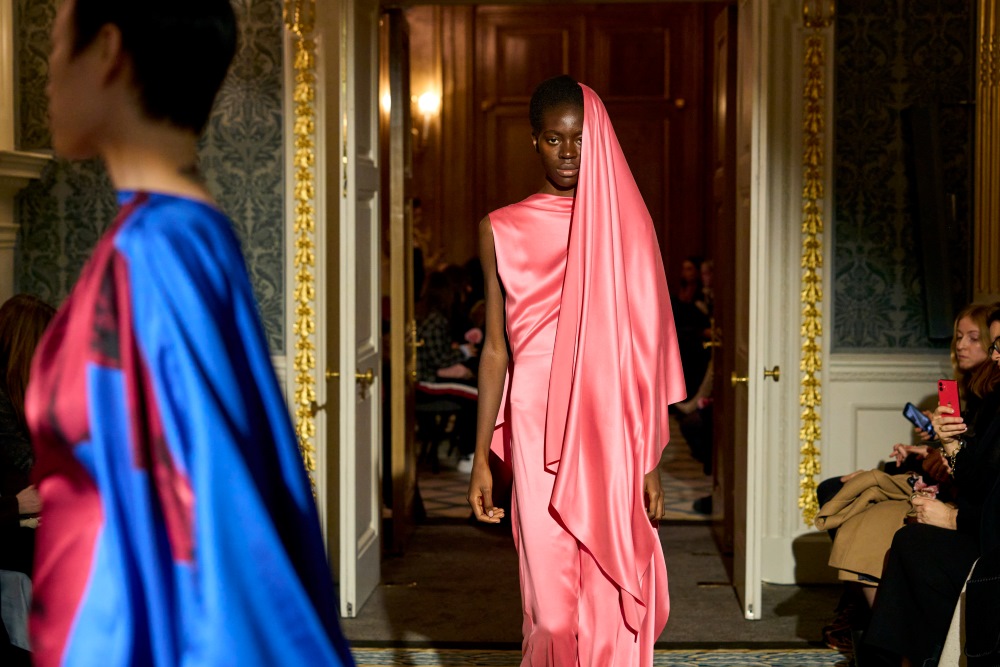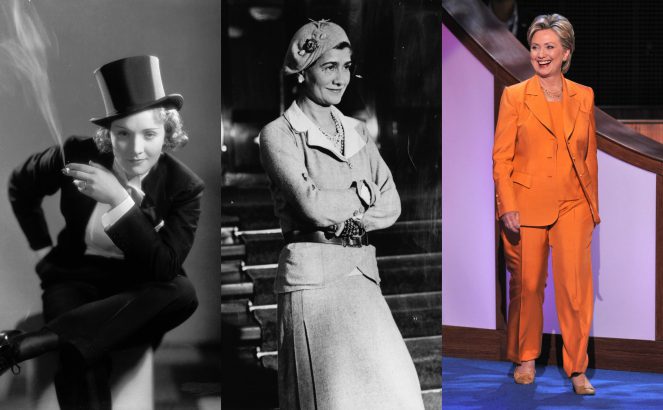Christian Dior is a world famous French fashion house founded by fashion designer Christian Dior. Clothing, shoes, accessories, jewelry, underwear, cosmetics and perfumes, mobile phones, men’s and women’s watches are produced under the Christian Dior brand. Christian Dior is an international company with a staff of 56 thousand people, with more than 60 boutiques around the world

Slogan: I love Dior
Company owner: Christian Dior S.A., part of LVMH (Louis Vuitton-Moet Hennessy)
Founded in October 8, 1946
Headquarters: France.
Christian Dior was born in the town of Granville in northwestern France (Normandy) on January 21, 1905. In 1911, when the boy was 6 years old, he and his family moved to Paris for permanent residence. Even as a child, a gypsy predicted the future of Christian, telling him that he would be left without a means of livelihood, but then he would get rich thanks to women. Naturally, the 14-year-old boy did not believe in it, because the affairs of the family were more than good. At the insistence of his parents, Christian was preparing to become a diplomat, for which in 1920 he entered the free school of political science. However, Dior limited himself to this, because this area was of little interest to him.


Since childhood, he was fond of art and dreamed of connecting his life with him. Instead of studying geography, politics and other sciences needed by a diplomat, Dior and his friend opened an art gallery in which they sold works of art of their contemporaries and antiques.
In 1929, the gallery ceased to exist due to the economic crisis. Then the fashion designer began selling sketches to Parisian Fashion Houses and illustrate the pages of Le Figaro magazine. As a result, his talent was noticed by Marcel Boussac, a textile magnate who financed his own fashion house Christian Dior.


The first collection
In February 1947, Dior presented the first collection of women’s clothing, which journalists immediately dubbed “New Look”. The magazine wrote: “Dior saved Paris as Paris was saved in the battle of the Marne”.
The collection made a revolution in the world of post-war fashion. The devastated France, accustomed to modest and practical styles, was simply smitten by chic feminine models from expensive fabrics with an emphasis on a wasp waist, long gloves and elegant hats. Dior returned to French fashion luxury and sophistication and became a real dictator of fashion for the next decade.




The great master of his time Balenciaga admitted that he found Dior’s treatment of fabric terrible. Multi-layered lining of teak, crisp linen, tulle is contrary to the fundamental credo of Balenciaga: “let the fabric speak for itself”. But the sharpest criticism was from Chanel: “Dior? He doesn’t dress women. He stuffs them.”
Nevertheless, despite criticism, dresses from Dior became incredibly popular, women vied for the right to buy them.

In 1949, Christian Dior owned 75 % of all French fashion exports. In the same year, according to a survey by the French Institute of sociological research Gallup, Dior was named among the five most famous people in the world.
Dior knew the market well. He introduced a completely new type of presentation that had nothing to do with sedate, calm pre-war fashion shows. At Dior the models were theatrical, majestically floated past the audience. Models replaced each other so quickly that took your breath away, at this time sounded fancy names: “Number one: Verdi! Number two: Pergolesi! Number three: Wagner!”. This performance could last up to two hours, and never became boring.
Every half of the year Dior has offered a new direction. He was the first couturier, who from one collection to the next could radically change the length of the skirt and even the entire silhouette. By the way, the designers of the House Dior subsequently created the tradition of every season fashion shows (in winter for next summer, and in summer – for next winter).

Perfume, cosmetics and jewelry
Immediately after the first resounding success, Dior released his first fragrance. These were Miss Dior, their delicate scent with the scent of lilies of the valley was matched by a new silhouette, light and airy. “Perfume is an unsurpassed shade of female individuality, the final touch of the image,” Dior liked to repeat.
After Miss Dior, there were other legendary scents – Diorama, Diorissimo, J’adore.
OPENING OF AVENUE MONTAIGNE STORE
Dior opens a new flagship store between Avenue Montaigne and Rue François ler in 1955. The year is also marked by the launch of Dior’s debut lipstick. A line of beauty products is to follow. That same year, upcoming designer Yves Saint Laurent becomes the first and only assistant to Christian Dior at the age of 19.


Christian Dior himself recognized only manual work, so each item in his workshops was created by the careful work of highly professional tailors. Thus, the couturier did not allow works of design art to turn into soulless stamped things. Dior worked all his life tirelessly, which subsequently had a negative impact on his health. In 1957 he died suddenly when he was at a health resort in Italy. After the death of Christian Dior, his young successor, Yves Saint Laurent, came to lead the fashion designer of the Dior brand.

Yves Saint Laurent (1957-1960)
Saint Laurent propelled Dior in a new and unexpected direction. His first collection, the ligne Trapèze (trapeze line), left the cinched waist behind and presented oversized A-line silhouettes that hid instead of showcased the female form. When Saint Laurent got called up to Algerian war of Independence in 1960, the cognoscenti welcomed his successor Marc Bohan with open arms. Famed for a refined and elegant sensibility, his appointment restored the fashion house’s feminine reputation.

Mark Bohan (1960-1989)
Mark Bohan led the fashion House for almost three decades (until 1989), the French designer presented the so-called Slim Look — a more flexible and soft adaptation of the canonical silhouette of Dior. Thanks to this move, the circle of famous customers of the House included Princess Grace of Monaco, Sophie Lauren and Marlene Dietrich. Between the years of 1967 and 1975, the label exploded in size: ready-to-wear collections were introduced, the first Baby Dior store was opened in Paris and Christian Dior Homme was successfully launched. Stores opened in London, New York and Hong Kong.



Gianfranco Ferre (1989-1996)
The Bohan’s successor was the Italian Gianfranco Ferre – the first foreign designer invited to work at Christian Dior. Gianfranco Ferre did not immediately agree to become the creative director of Christian Dior: he was offered this position for the first time in 1986, but then he refused. In 1989, he took the post of designer Christian Dior and presented a collection that marked the return of Dior’s style. While working at Christian Dior, Ferré received the Golden Thimble Award, becoming its first Italian owner. In 1996, there were rumors that Ferré would leave Christian Dior. They turned out to be true: the designer soon left the company in order, according to the official version, to concentrate on the work of his own brand.


John Galliano (1996-2011)
John Galliano was next in line to lead the label and in 1996 he immediately made headlines when the Princess Diana wore the first couture dress he designed. Also on his list of accolades was the launch of the now-signature saddlebags which became a perennial favourite. Branded with a repeat logo motif and crafted to a distinctive shape with a small shoulder strap, the bag was picked up by the likes of early-noughties style icons Sarah Jessica Parker, Sienna Miller and Mischa Barton.


There was a controversial side to his approach; his collections were theatrical and often more artistic than they were wearable. He worked with photographer Nick Knight to create bold, statement-making campaigns with a sexual, sometimes punk-inspired twist. Despite his brilliance, Galliano left the label under a cloud after being fired for making anti-semitic statements in a video taken on a drunken night out.


Bill Gaytten (2011-2012)
After Galliano left, the brand’s design team was temporarily taken over by his deputy, Bill Gaytten. Despite the fact that he was acquainted with John Galliano for about thirty years, and seventeen of them was his right hand, Gaytten stopped talking to his former boss immediately after the scandal. The first own collection of him was met negatively because of the obvious similarity with the Galliano style, the next ones were met cool, because of the excessive use of transparent materials.


Raf Simons (2012-2015)
Raf Simons is appointed artistic director of the Haute Couture, Ready-to-Wear and Accessories for Women collections In 2012.

He made a point of differentiating himself to Galliano from the day of his appointment as artistic director in 2012. Equally as brilliant but noticeably more understated, Simons’s collections were wearable while the runway shows brought drama. His artful, often tactile, collections attracted a celebrity-peppered front row that included Jennifer Lawrence and Rihanna.
In three and a half years of his creative leadership of the house, sales of Christian Dior grew by 60 %. However, despite the incredible success, he resigned for personal reasons in 2015.

Maria Grazia Chiuri (2016 – present)
After that there was much discussion around who should take over. A lot of speculation surrounded Givenchy’s Riccardo Tisci and Céline’s Phoebe Philo. It was Maria Grazia Chiuri, the former Valentino co-creative director who became the first female to head up the label in 2016, and she still holds the position today.

“I’m not here because I’m a woman but because I’m good at what I do,” Chiuri told Vogue backstage at her spring/summer 2018 runway show, which featured the now-famous ‘We Should All Be Feminists’ T-shirt. Her approach is literal, unapologetic and streetwear-inspired but looks are equally as confident as the original hourglass silhouettes coined by the founder.
Chiuri proves that Christian Dior’s initial message – one of female empowerment – lives on some 70 years later, now designed to resonate with the modern woman.





































Outstanding story of the world-known brand! Will you write about other brands? DVF or Gucci maybe
yes definitely planning to share a few more interesting stories soon.
I plunged into an Interesting journey into the past of the house “Dior”. Can you introduce me to the history of the “Chanel” brand?
I plunged into an Interesting journey into the past of the house “Dior”. Can you introduce me to the history of the “Chanel” brand?
Hi Ardak, sp happy you enjoyed the article!
We are definitely sharing the history of Chanel soon
My fav brand. Interesting history, will look after chuiri’s path. She is definetely doing great job
how can we not love Dior, right?
“I’m not here because I’m a woman but because I’m good at what I do” – very strong message ?
indeed! Christian Dior was such an inspiring designer